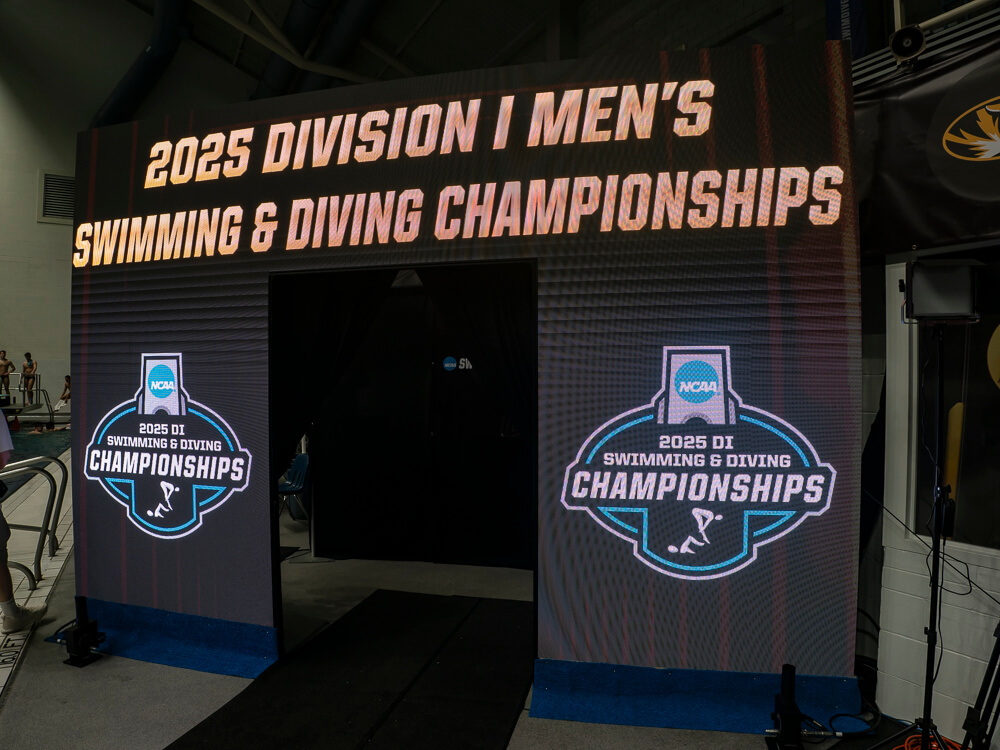NCAA Division I Swimming Event Schedule Will Look Vastly Different This Spring
For the first time in decades, the 500 freestyle will not be the first individual event contested at the NCAA Division I Swimming Championships. The 200 butterfly will not come last, although that race will still be highlighted on the final day of the meet. That is thanks to the recent ratification of a proposal “designed to support collegiate swimming and diving by modernizing the championship format to better align with broadcast needs.”
The changes include a complete reconstruction of the event schedule. For the first time ever, an individual event will take place Wednesday as the 1650 freestyle becomes the meet’s opener. The 100 butterfly, 400 IM, 200 freestyle and 100 breaststroke will take place Thursday, followed by the 100 backstroke, 200 breaststroke, 500 freestyle and 50 freestyle Friday. The meet concludes with the 200 IM, 100 freestyle, 200 butterfly and 200 backstroke Saturday.
The full schedule, as posted in a report of the NCAA Swimming and Diving Oversight Committee videoconference from Sept. 25, is available here.
Relay events will remain in the same spots they have occupied since 2022, with the 200 medley relay and 800 free relay taking place Wednesday, the 200 free relay Thursday, 400 medley relay Friday and 400 free relay Saturday. Relays will remain timed finals, but with all except the fastest heat swimming at the end of the morning session.
The changes will immediately force coaches and swimmers to make difficult decisions about their racing lineups for the NCAA meet, perhaps even overhauling long-established plans. The potential conflicts begin in the Wednesday session, where distance swimmers will be fatigued if they are needed to compete on their team’s 800 free relay. Additionally, the final two days of racing will bring in potential conflicts.
During the University of Virginia’s five-year run atop women’s NCAA swimming, Kate Douglass has raced both the 200 breast and 50 free at the NCAA meet while Claire Curzan did both the 100 back and 50 free last year. As for Saturday, swimmers as prominent as Stanford’s Torri Huske have competed in both the 200 IM and 100 free at the same meets. And the days of swimmers contesting the 200 IM and then either the 200 back or 200 fly might be over; at the last two NCAA Men’s Championships, the same swimmer has won both the 200 IM and 200 back when they were held on different days (Hubert Kos in 2025, Destin Lasco in 2024), but swimmers aiming for those races might choose their events differently moving forward.
The major changes to the meet include the elimination of consolation finals, with swimmers scoring points for places nine through 16 based on their results in the preliminary round. Diving finals are being split into two separate segments of three dives each, although the three diving disciplines will remain on the same days at the national meet (1-meter Thursday, 3-meter Friday, platform Saturday). Award ceremonies will now take place at the end of each session, curtailing each finals session to a 90-minute window.
Finally, all swimmers winning conference titles in an event while matching or exceeding the NCAA qualifying time will receive an automatic bid for the NCAA Championships. Within the report, the NCAA committee specified which conferences are eligible to have automatic qualification for 2025-26. Each of the leagues must have at least five member institutions that sponsor swimming and diving.
The list of qualifying conference includes: America East Conference; American Athletic Conference (women’s only); Atlantic Coast Conference; Atlantic Sun Conference; Atlantic 10 Conference; Big East Conference; Big Ten Conference; Big 12 Conference; Big West Conference; Coastal Athletic Association; Horizon League; The Ivy League; Metro Atlantic Athletic Conference; Mid-American Conference (women’s only); Missouri Valley Conference; Mountain Pacific Sports Federation; Mountain West Conference (women’s only); Northeast Conference (women’s only); Patriot League; Southeastern Conference; and The Summit League.
